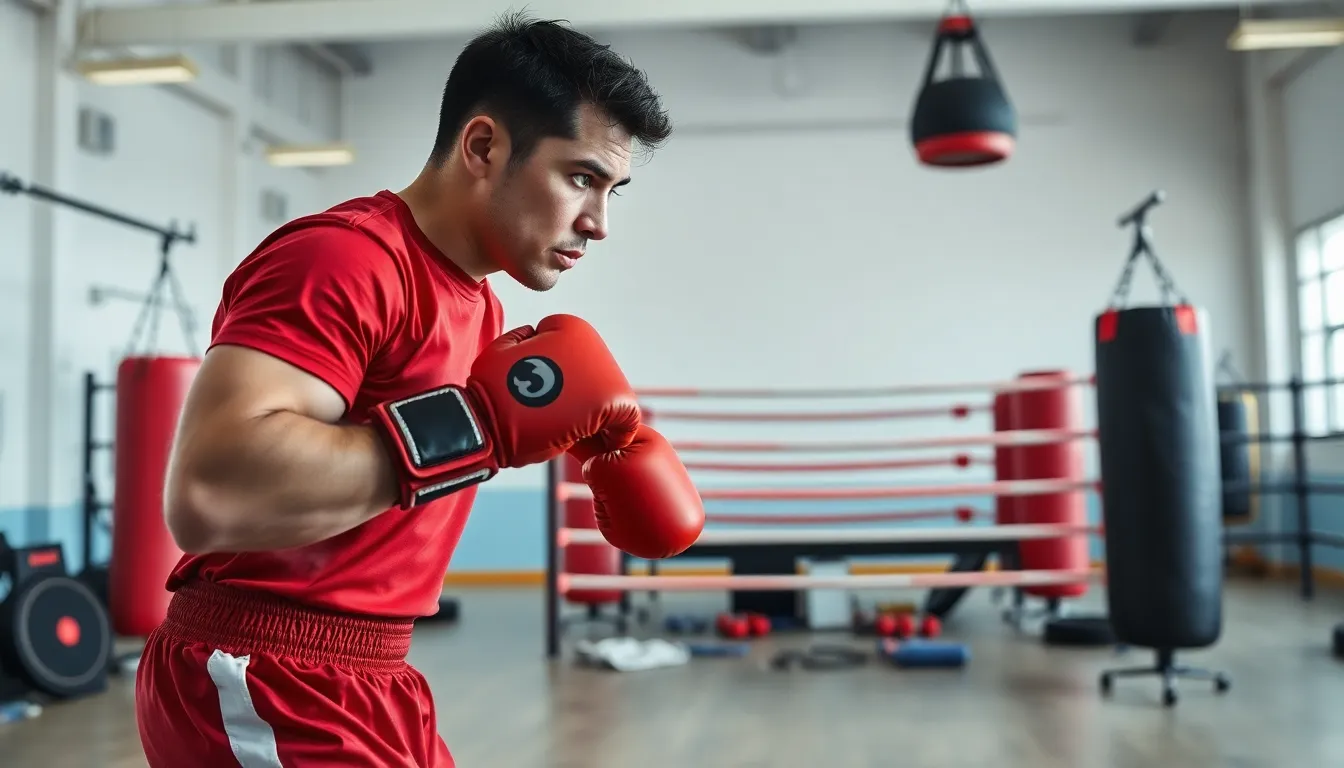
Boxing practice isn’t just about throwing punches; it’s a dynamic blend of skill, strategy, and discipline. Whether you’re a seasoned fighter or a beginner stepping into the ring for the first time, understanding the nuances of effective training can elevate performance and build confidence.
From mastering footwork to developing powerful combinations, each aspect of boxing practice plays a crucial role in shaping a fighter’s abilities. Engaging in regular training not only enhances physical fitness but also sharpens mental focus, making it a comprehensive workout for both body and mind. As the popularity of boxing continues to rise, more individuals are discovering the transformative benefits of this age-old sport.
Understanding Boxing Practice
Boxing practice encompasses a range of techniques and drills essential for developing a fighter’s skills. It fosters not only physical conditioning but also mental resilience and strategic thinking.
Importance of Boxing Practice
Boxing practice plays a vital role in mastering the sport, enhancing skills like punch accuracy and defensive maneuvers. Consistent practice aids in developing stamina, strength, and agility, which are crucial for performance. It builds discipline and focus, allowing fighters to set and achieve personal fitness goals. Regular practice also promotes camaraderie among fighters, creating an encouraging environment to learn and grow together.
Types of Boxing Practice
Boxing practice includes various types of training, each targeting specific skills.
- Shadowboxing: Fighters practice movements and techniques without a partner, improving form and footwork.
- Heavy bag training: This focuses on power and endurance, allowing fighters to practice punches against resistance.
- Speed bag work: Enhancing hand-eye coordination and rhythm, this type of training develops quick reflexes.
- Sparring: Live practice with partners hones defensive and offensive skills in a controlled setting.
- Footwork drills: These exercises promote agility and balance, essential for effective movement during fights.
Essential Gear for Boxing Practice

Boxing practice requires specific gear to ensure safety and enhance performance. The right equipment not only promotes effective training but also prevents injuries.
Gloves and Hand Wraps
Boxing gloves protect hands and minimize injuries during practice. They come in various weights, typically ranging from 8 to 16 ounces, to accommodate different fighters and training types. Hand wraps, usually measuring 180 inches, support the wrist and knuckles, absorbing impact forces. Fighters should secure their hand wraps snugly before putting on gloves, ensuring optimal protection. Investing in quality gloves and hand wraps significantly contributes to maintaining long-term health and improving boxing skills.
Shoes and Protective Equipment
Footwear designed for boxing provides essential support and traction. Specialized boxing shoes offer lightweight construction, ankle support, and a proper grip on the ring canvas. These shoes typically weigh around 10 ounces and enhance mobility during training. Additionally, protective gear such as headgear, mouthguards, and groin protectors ensures safety during sparring sessions. Headgear reduces the risk of cuts and concussions, while mouthguards prevent dental injuries. Proper shoes and protective equipment enhance training effectiveness, allowing fighters to focus on skill development with confidence.
Techniques to Improve Boxing Practice
Improving boxing practice involves honing specific skills and refining techniques. Focus on footwork and strategic punching combinations to enhance performance in the ring.
Footwork Drills
Footwork drills are crucial for establishing a solid foundation in boxing. Incorporate ladder drills to increase speed and agility. Implement shadowboxing focusing on lateral movement to improve positioning against an opponent. Use cone drills to enhance quick direction changes, simulating real-fight scenarios. Practice pivoting to maintain balance while evading punches. Engage in skipping rope exercises to build endurance and coordination. Regularly practicing these drills improves overall mobility, allowing for effective offense and defense during sparring and matches.
Punching Combinations
Punching combinations develop a fighter’s offensive strategy and speed. Start with basic combinations like the jab-cross (1-2) to establish rhythm. Progress to more complex series, such as jab-cross-hook (1-2-3) or uppercut combinations for added unpredictability. Use the heavy bag for power generation, focusing on technique while maintaining intensity. Incorporate speed bag work to enhance hand-eye coordination and rhythm. Record practice sessions to analyze technique and improve decision-making in response to varying situations. Consistent practice of these combinations builds muscle memory and confidence in executing attacks during bouts.
Structured Boxing Practice Routines
Structured boxing practice routines encompass essential warm-up exercises and sparring sessions that enhance a fighter’s performance.
Warm-Up Exercises
Warm-up exercises prepare the body for rigorous training, reducing injury risk. Dynamic stretches, such as arm circles and leg swings, facilitate muscle activation. Jumping rope boosts cardiovascular fitness, improving stamina and coordination. Shadowboxing engages multiple muscle groups, enhancing flexibility and technique. Engaging in 10 to 15 minutes of these exercises ensures optimal readiness for more intense boxing drills and sparring.
Sparring Sessions
Sparring sessions simulate real fight conditions, allowing boxers to practice skills against live opponents. Each session focuses on developing timing, distance management, and adaptability. Pairing with different partners challenges fighters and exposes them to varied styles. Coaches often spotlight specific skills or tactics to concentrate on during these rounds. Typically lasting 2 to 3 minutes, these sessions incorporate breaks for feedback and strategizing, solidifying learned techniques in a practical setting.
Conclusion
Boxing practice is a dynamic journey that fosters physical and mental growth. By engaging in various techniques and drills, individuals can significantly enhance their skills while building resilience and camaraderie. The structured routines and essential gear ensure safety and effectiveness, enabling fighters to focus on their development.
Whether one is a seasoned boxer or a beginner, the commitment to consistent practice leads to remarkable improvements in technique and confidence. As boxing continues to gain popularity, its transformative benefits remain clear, making it a rewarding pursuit for anyone looking to challenge themselves and achieve their fitness goals.






